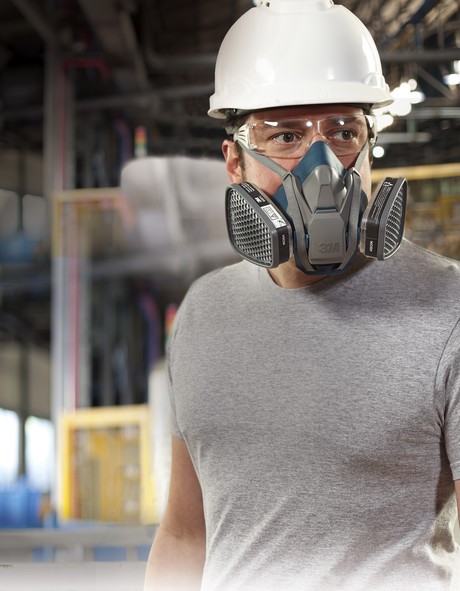
Respiratory Protective Equipment (RPE) is a particular type of Personal Protective Equipment (PPE), used to protect the individual wearer against the inhalation of hazardous substances in the workplace air. RPE should only be used where adequate control of exposure cannot be achieved by other means, in other words, as a last resort within the hierarchy of control measures: Elimination, Substitution, Engineering Controls, Administrative Controls, PPE.
Employer’s responsibility
RPE is unlikely to provide the best protection if the wearer doesn’t know how to use it and maintain it.
Employers must ensure that adequate training is provided to all operatives, supervisors and managers who have any reason to use RPE in the workplace, before first use.
Employers are required by law to ensure that adequate training for RPE is given before first use. Refresher training is also essential for those who use RPE but infrequently.
When to use RPE
Use RPE when harmful substances such as dust, mist, gas or fumes are contaminating the air or when oxygen levels are low.
To select the RPE that is adequate and suitable for a wearer, you will need to understand:
- the hazardous substance and the amount in the air (exposure)
- the form of the substance in the air (e.g. gas, particle, vapour)
- the type of work being carried out
- any specific wearer requirements, such as other PPE or a need for spectacles
How to use RPE
To ensure your RPE works, you should make sure:
- The chosen RPE fits, is suitable for the task and the wearer
- You conduct fit tests for each wearer, for each piece of tight-fitting RPE they use
- The RPE works with other protective equipment the user wears
- The wearers are trained to use it and are supervised
- You maintain each device as per the manufacturers’ instructions
- The RPE is stored properly
Types of respiratory equipment
RPE is divided into 2 types; a Respirator uses filters to remove contaminants in the workplace air (they are either non-powered or powered) and Breathing apparatus which needs a supply of breathing-quality air from an independent source, e.g. an air cylinder or compressed air.
Both types of RPE fit into 2 main groups:
- Tight fitting facepieces or masks which rely on making a good seal with the wearer’s face
- Loose fitting facepieces which rely on enough clean air being provided to the wearer
Breathing apparatus training
Training is essential for the successful application of breathing apparatus in any work situation. Training can cover all aspects including theory, pre-use checks, donning, after use, storage and cleaning; for all types of breathing apparatus including escape, self-contained, airline, fresh air hose and re-breather chemical type. Training can be tailored to specific site procedures and cover typical work related scenarios such as spill response, basic fire behaviour, integration with gas tight suits and snatch rescue.
Ongoing competency of a breathing apparatus user is critical, with skill fade and unfamiliarity over time, regular drilling helps to solve this issue.
Confined space training
Confined spaces remain one of the most hazardous work environments today, still claiming lives each year. It is critical that operatives in these areas are adequately trained on procedures and equipment that is designed to make this work as safe as possible. Sadly many workers have died because they have entered confined spaces without RPE, used incorrect RPE or worn it incorrectly.
Many of the gases, vapours and dusts that cause serious damage to lungs and other parts of the body can be invisible to the naked eye. RPE can help to protect you from these hazardous substances that can cause serious diseases. And training in how to use RPE properly is vital.
As well as RPE you need to take other measures to reduce contamination levels in the air such as providing adequate ventilation in confined spaces.
Asbestos
RPE is essential for those charged with the safe removal and disposal of asbestos.
The Control of Asbestos Regulations 2012, Regulation 10 requires every employer to ensure that adequate information, instruction and training is given to their employees who are or who are liable to be exposed to asbestos, or who supervise such employees.
If you are or likely to be involved with asbestos then contacting the UK Asbestos Training Association (UKATA) would be a good first step.
Fit testing
It is a legal requirement that workers using tight fitting respiratory protective equipment (face pieces/masks) must be fit tested by a competent person. This requirement is detailed in CoSHH regulations.
Anyone can wear RPE but it doesn’t mean that it will fit properly which, of course, is the essential business of face fitting. If there isn’t a good seal between the wearer’s face and the RPE, it will leak. Wearers must be face fit tested before they use the equipment and training on how to use it and maintain properly is essential.

Recent Comments